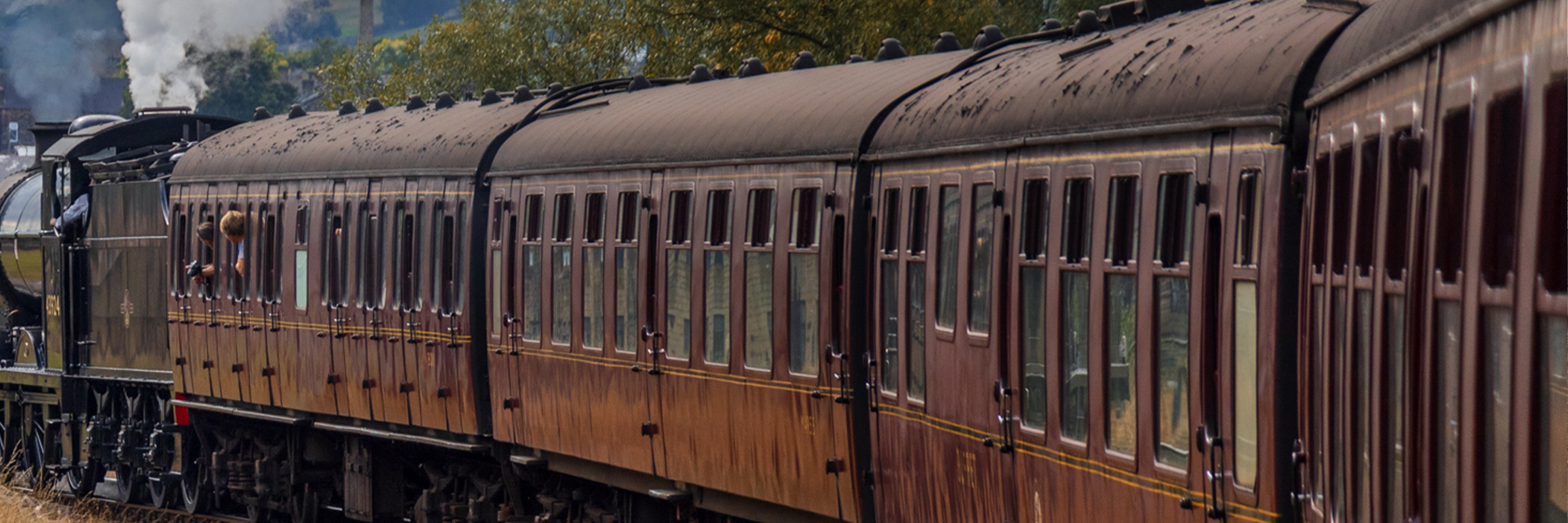The standard design in post-War Britain
These standard British Railways coaches were developed when the railways were nationalised in 1948. Coaches were needed to replace those ravaged by the effects of war and had either been damaged beyond repair or received little attention during hostilities.
In addition, the coaches of the individual companies had been built to totally different specifications resulting in operational difficulties with LMS, LNER, GWR, and SR coaches working together. So, the new stock would have to be compatible to work with coaching stock from the old companies whilst being of a standard design.
And so the British Railways Mark 1 coach was born.
Built-in their thousands from 1951 – 1963
Incorporating the best features of each of the former companies’ designs and designed to be much stronger than their predecessors to provide better protection for passengers in the event of a collision or derailment, designs were agreed for long-distance and commuter traffic.
The first standard coaches started rolling off the production lines in 1951. They were built at Derby, Doncaster, Eastleigh, Swindon, Wolverton and York and, with modifications as new ideas and materials were developed, Mark 1s continued to be built until 1963 (although multiple units and non-passenger stock continued to be built until 1974).
History
The British Railways Standard Mark 1 coaches were developed when British Railways was formed (on 1st January 1948) after it was realised that the existing coaching stock was in a poor state of repair, largely due to the effects of the Second World War, a period when most railway workshops had been taken over for the manufacture and supply of war materials rather than their usual function of maintaining railway stock.
Due to the shortage of materials and finance during the austerity years immediately after the Second World War, BR designs for new coaching stock were always a compromise between the quality of materials and finance. Materials like steel were effectively rationed and only available in standard size sheets, and the good quality timber traditionally used for the body frames was virtually impossible to obtain.
Several design constraints were also imposed for any new coach stock. Whilst the railways were operated by the Railway Executive Committee during the Second World War, it was found that there were operational difficulties with LMS, LNER, GWR and SR coaches working together. So, the new stock would have to be compatible to work with coaching stock from the old companies whilst being of a standard design.
In 1946 a committee of senior officers was appointed to look at all the problems. From this, the BR Railway Carriage Standards Committee developed the outline dimensions of BR Standard Mark 1 Coach. The height, length (2 specified lengths), width, ride heights, construction methods, materials and the technological advances of the four pre-nationalisation companies were to be incorporated.
The next consideration for the design team was the passenger carrying layout of each carriage to make each coach suitable for the type of work it was intended to carry out. For high-intensity commuter services, like those out of London, compartment stock was the choice as this could accommodate high numbers of passengers. Other compartment coaches were provided a toilet in the centre area but still no connection to other coaches within the train formation. These became known as semi-compartment coaches. Finally, coaching stock for long-distance journeys was developed where a corridor was provided through the full length of the train, either down one side or through the centre of each coach. The provision of open corridor coaches was also to try and shorten the times taken at station stops by allowing passengers to board and then find a seat once underway.
Here on the KWVR, we have several types either manufactured by British Railways or by private contractors to the British Railways designs
